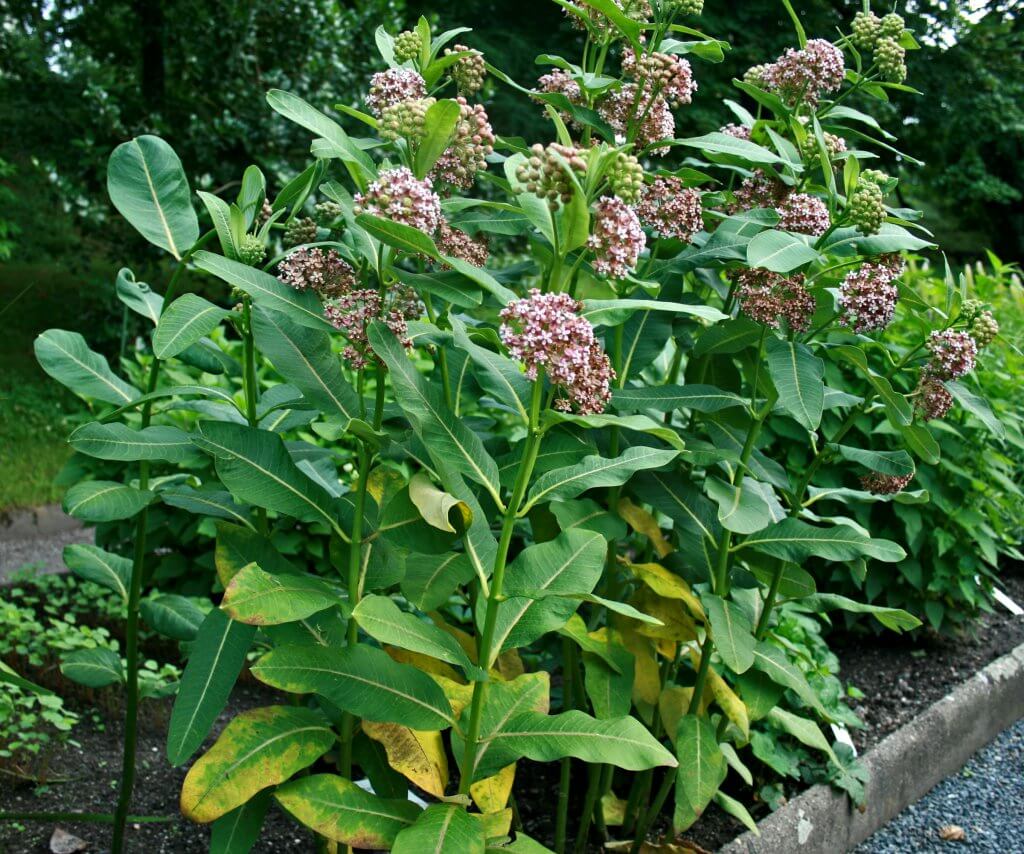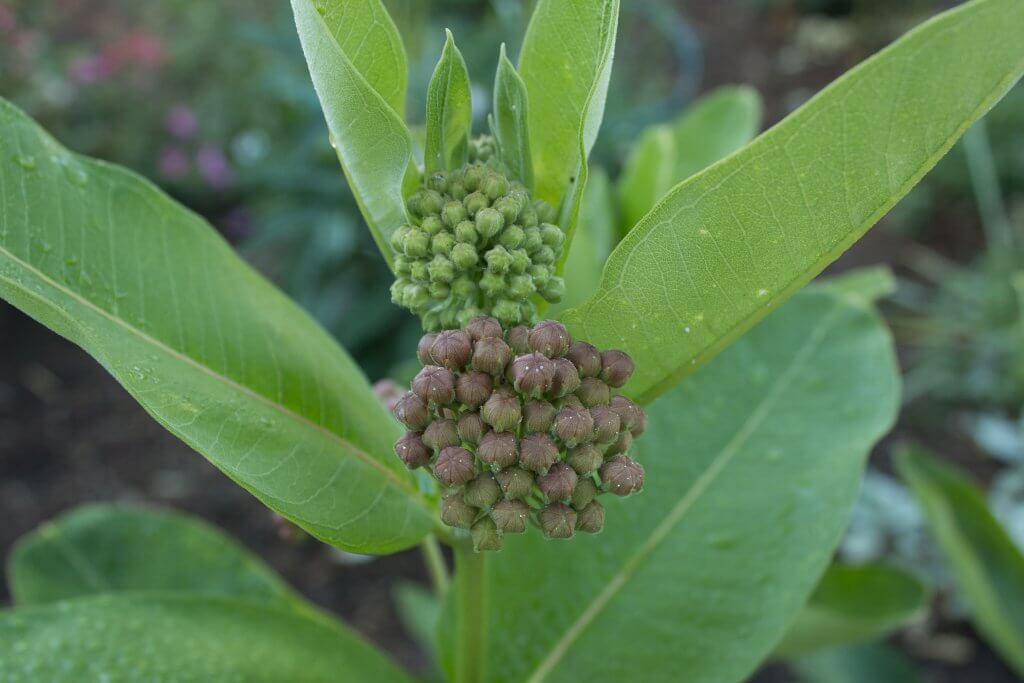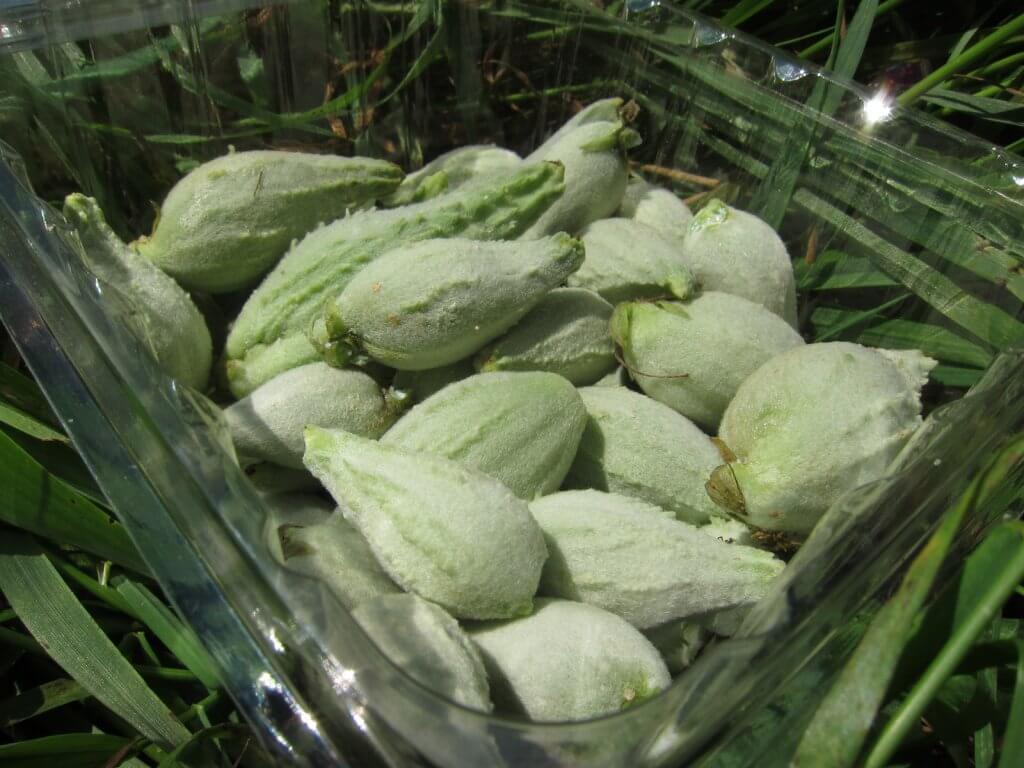Milkweed (Asclepias spp.) is a genus of perennial herbs with edible parts not unlike our typical garden vegetables. They are endemic to North and South America, particularly the eastern and mid west US. They can be found growing on open grasslands, meadows and the edges of roads and hiking trails. Any area with good sun exposure and sandy soil is likely to bear a number of milkweeds, they are an extremely secure species.
Typically the most commonly consumed milkweed species is the common milkweed (Asclepias syriaca). Although some other species have been tried and tested, common milkweed is considered the safest and luckily most prolific species to cook and experiment with. You may also recognise it by the name silky swallow-wort or Virginia silkweed. ‘Butterfly flower’ is another common name, as it is well known for attracting the beautiful monarch butterfly.

It tends to reach about 2 meters in height, with the stalks growing from a collections of rhizomes. The leaves are simple, pointed ovals that reach roughly 25cm. Whenever you cut or break a leaf, or stem, you’ll see a milky white substance appear, this contains latex. When flowering in spring you will see white/pinkish cluster of flowers towards the top of the stem.
Edible parts and other uses
The flower buds, shoots, young leaves and young seed pods can be eaten raw or cooked. The flavoring resembles green beans and asparagus. From salads, to sauces, or a stir fry, milkweed works fantastically as a vegetable in a variety of dishes.

Milkweed species have a surprising variety of uses. It is also grown and harvested for use as insulation, from padded winter coats to pillow stuffing. Native Americans also once used the fibrous innards of the fruit/seed pod to create ropes and some textiles.
It has also been grown to be utilised as a product that can clean up oil spills. Known widely by a number of WWII historians, milkweed was also grown by the US for use as insulation in a number of products.
Foraging
It grows in fairly dense and wide patches, so you’re bound to stumble upon a good supply to harvest. The young leaf shoots are the first part of the plant available to harvest. In spring, when the shoots are roughly 6-10 inches and still fairly compact, is the optimal time for picking.
Next to flourish are the flower buds. These clusters can be plucked from the stems, at a stage where they greatly resemble broccoli. Finally, the pods will be the last available yield you can collect from a milkweed patch. Be sure to collect pods that are not open or too soft. They should be fairly firm and also not too large, as bigger pods will have developed a thicker and rougher texture.

Cautions
Dogbane (Apocynum cannabinum) is a poisonous lookalike for milkweed. So careful identification before harvesting is essential when out and about foraging.
Many milkweed species also contain a number of bitter toxic compounds that can cause stomach upsets if eaten in great quantities. Common milkweed is considered safe to consume, although it is generally recommended to thoroughly cook each part of the plant before eating. Ensure you do not eat them in too high a volume or too regularly, to avoid the risk of causing illness.
Did you know…
Milkweed was also cultivated by the US and Nazi Germany, who both hoped to create a natural rubber from the latex contained within the plant.
Conclusion
Milkweed is a fantastic plant to forage and harvest. Growing your own patch of milkweed is also a brilliant way to keep a close supply and also attract butterflies to your garden. The soft crunch from milkweed pods is often likened to okra, making it a great vegetable alternative to cook with. Be sure to correctly identify the plant before collecting any plant parts and before cooking.
—————Written by Hannah Sweet
Hannah is a freelance writer and graphic designer from the UK. With a penchant for travelling, photography and all things botanical, she enjoys writing about a wealth of topics and issues, from conservation and slow living, to design and travel. Learn more about her writing and design services at www.sweetmeanders.co
Many of our readers find that subscribing to Eat The Planet is the best way to make sure they don't miss any of our valuable information about wild edibles.
See our privacy policy for more information about ads on this site






